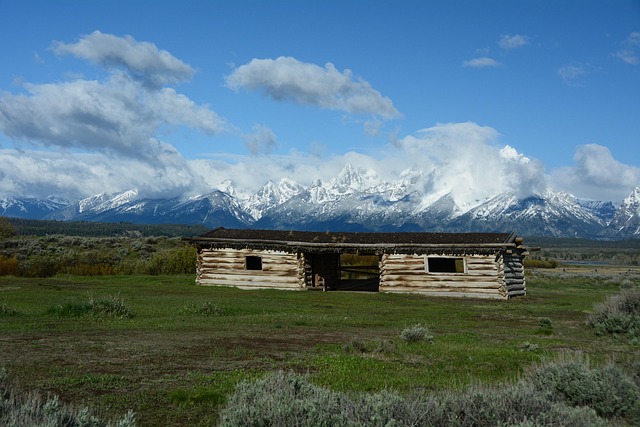In the 19th century, pioneer life in Oregon attracted adventurers seeking new opportunities, fertile land, and escape from Eastern overcrowding. Settlers faced harsh conditions, established settlements, and laid the groundwork for Lane County's modern identity, celebrated through local traditions and a commitment to preserving natural beauty. Pioneer resilience inspires Oregonians today, influencing the region's culture and global appeal as a haven for outdoor enthusiasts.
“Uncover the captivating story of pioneer migrations to Lane County, Oregon, where resilience met opportunity. In the early 1800s, the ‘Oregon Country’ beckoned adventurers and dreamers with promises of fertile land and a new beginning. Driven by motivations ranging from economic prospects to religious freedom, pioneers braved treacherous journeys, encountering untamed wilderness and establishing settlements that would shape the state’s future. Today, Lane County stands as a living testament to their endurance, with its vibrant communities echoing the enduring legacy of pioneer life in Oregon.”
- Historical Context: Oregon Country in the Early 1800s
- Motivations Behind Pioneer Migrations
- Challenges Faced by Early Settlers in Lane County
- Legacy and Impact of Pioneer Life in Oregon Today
Historical Context: Oregon Country in the Early 1800s

In the early 1800s, what was then known as the Oregon Country was a vast and largely unexplored territory that stretched from present-day Canada to California. This region, rich in natural resources and boasting diverse landscapes, became a magnet for those seeking new opportunities and a fresh start. The allure of pioneer life in Oregon was fueled by promises of fertile land, abundant game, and the opportunity to escape the constraints of Eastern society. As word spread about the potential of this untamed wilderness, adventurous souls from various backgrounds began making their way west, driven by a spirit of exploration and determination.
The early 1800s Oregon Country was characterized by a complex web of cultural interactions between Native American tribes who had inhabited these lands for millennia, fur traders, and later, American settlers. The vast majority of early pioneers were men, many of them experienced farmers or skilled craftsmen from the Midwest and Eastern states. They faced immense challenges, including harsh weather conditions, uncharted territories, and limited resources, but their resilience and determination paved the way for a new chapter in Oregon’s history, shaping the state we know today through their courage and perseverance in pioneer life.
Motivations Behind Pioneer Migrations

The motivations behind pioneer migrations to Lane County, Oregon were multifaceted and driven by a desire for new opportunities and a better life. Many pioneers were enticed by the promise of fertile land, abundant natural resources, and the chance to escape the overcrowding and economic struggles of the East. The allure of Oregon’s untamed wilderness, with its vast expanses of land and promising climate, was particularly appealing to those seeking to start fresh in a new frontier.
Pioneer life in Oregon represented an opportunity for self-sufficiency and independence. Families were drawn to the prospect of owning their own farmland, building communities from scratch, and shaping their future. The challenges of pioneer life—from clearing land, constructing homes, and establishing agriculture to dealing with harsh weather conditions and isolation—were seen as necessary trials in pursuit of a better tomorrow, where hard work and determination could lead to prosperity and a deeper connection with the land.
Challenges Faced by Early Settlers in Lane County

The early settlers who ventured into Lane County, Oregon, during the 19th century encountered numerous challenges that tested their resilience and determination. Pioneer life in this untamed region was characterized by a harsh climate, dense forests, and rugged terrain, making it a far cry from the comfortable lives they had left behind. Establishing sustainable settlements required immense effort and innovation as they battled to clear land for agriculture, build shelter, and secure food and water resources.
These pioneers also faced significant isolation, as Lane County was then largely inaccessible by road or rail, relying instead on rivers and trails for transportation. The distance from civilized areas meant limited access to essential supplies, medical care, and educational opportunities, further complicating their quest to build a new life. However, their spirit of adventure and unwavering willpower propelled them forward, paving the way for future generations to thrive in this picturesque Oregon county.
Legacy and Impact of Pioneer Life in Oregon Today

The legacy of pioneer life in Oregon continues to shape the state today, evident in the region’s robust communities and diverse landscape. Those who ventured into uncharted territories left an indelible mark by clearing forests, cultivating fertile soil, and establishing towns that now thrive as cultural hubs. The spirit of resilience and innovation that characterized pioneer life remains a source of inspiration for Oregonians, fostering a strong sense of community and environmental stewardship.
This rich history is still very much alive in Lane County, where the pioneer spirit can be felt in local traditions, festivals celebrating early settlers’ accomplishments, and an unwavering commitment to preserving natural beauty. Their legacy extends beyond physical structures; it’s woven into the fabric of the region’s identity, influencing its artistic expressions, culinary delights, and a deep-rooted appreciation for the outdoors that attracts visitors from around the globe.
